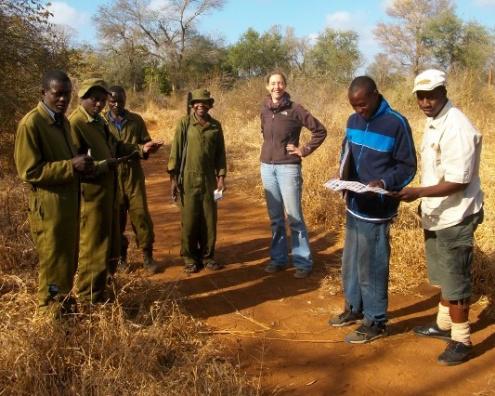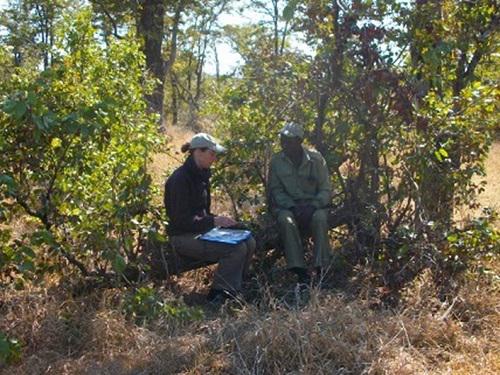Esther van der Meer
Other projects
14 Aug 2012
Surveying the Unknown: Determining Cheetah Presence, Connectivity and Levels of Human-Cheetah Conflict in North-West Zimbabwe
After covering the northwest/north last year, we aim to conduct a questionnaire based field survey in the southwest/south of Zimbabwe to gain an understanding of cheetah distribution, the levels of human-cheetah conflict and corridor use in this part of the country. This knowledge will help to strengthen the National conservation strategy of the species.

Handing out spoor reference guides
The conservation value of the Zimbabwean cheetahs was acknowledged in both a national and regional conservation action plan. Yet, with the last country wide assessment carried out 15 years ago, little information is available about the current status of the national cheetah population. In order to set priorities and implement a strategy for cheetah conservation, there is an immediate need to determine the cheetah population status and potential challenges to the species survival. In 2012 CCPZ started with the collection of cheetah sightings and pictures from all over the country. In addition, in 2013, CCPZ carried out a questionnaire based field survey in north/northwest Zimbabwe to collect more in depth information about cheetah occurrence, cheetah numbers and the conservation challenges the species faces.

Interviewing a ranger in the bush.
Satisfied with the results, in 2014, CCPZ will expand this survey to the south/southwest of Zimbabwe. The collection of sightings and pictures in combination with the questionnaire based survey allows us to:
- Determine the status and distribution of the cheetah population in southwest Zimbabwe
- Determine what conservation challenges the cheetahs face, e.g. the level of human-cheetah conflict, lack of connectivity, transboundary movement
We have incorporated an education component within the survey which allows us to:
- Address mitigation methods for human cheetah and/or carnivore conflict in areas where this conflict occurs, e.g. by distributing educational material on conflict mitigation and talking to village heads and field staff dealing with conflict cases
- Provide in situ education to create awareness and educate field staff about cheetahs, carnivores and how to improve record keeping
Although the cheetah is the main focus of our research, we also collect information on the status and distribution of 12 other carnivore species. Ultimately the collected information will enable us to give recommendations to the local authorities on where to set priorities for the conservation of cheetahs and how to improve the conservation strategy of the species.